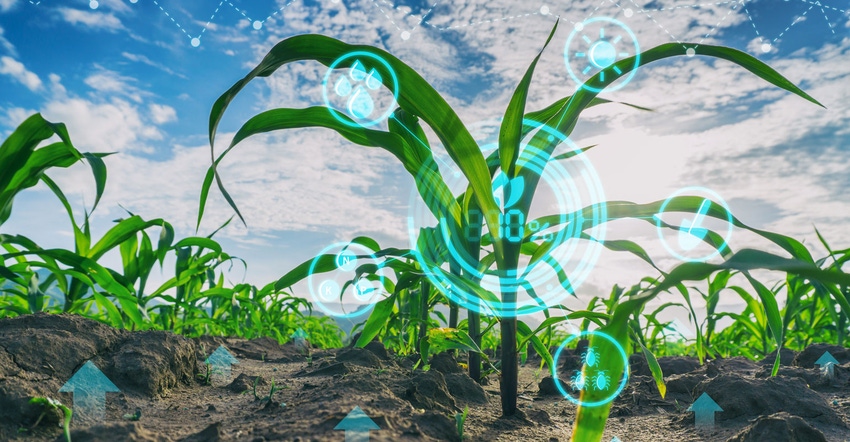September 28, 2021

The pandemic has brought a fair share of changes to the daily lives of many, such as more purchases and group chats being done online. One area of advancement is the use of internet-connected agricultural tools, according to a new survey from Inmarsat.
“This is a global study across a number of vertical markets,” says Steven Tompkins, director of market development for Inmarsat. “Our previous study was in 2018. We have 450 respondents across the different market segments.”
Inmarsat is a global mobile satellite communication provider for a number of industries, including agriculture. With the proper receiver, the company’s geostationary satellites can offer coverage where cell service is nonexistent.
The use of Internet of Things tools is advancing. Tompkins says the most recent survey also casts a wide net when defining IoT.
“When we talk about IoT, it will be any technology that needs to connect some form of data from field to platform — so anything from autosteer to precision farming to a weather sensor or a motion sensor,” he says. “The pandemic has accelerated the adoption of IoT.”
A look at results
According to the Inmarsat survey, 80% of ag respondents have fully deployed at least one IoT project, with more than half (53%) achieving this in the 12-month period from the second quarter of 2020. Of the remaining, 20% plan to deploy some form in the next two years.
The pandemic did have an impact, as 85% of ag respondents noted they have or intend to accelerate adoption of IoT in response to challenges from COVID-19. That includes nearly half who have already accelerated the effort, versus about a third who will accelerate the effort over the next year.
And 60% of respondents say that business and operational challenges related to COVID-19 have underlined the importance of IoT.
What does that mean to the average row crop farmer? Today, a lot of IoT investment goes into “protected agriculture,” often sensors in greenhouses. But Tompkins says these tools will gain more traction across broad-acre agriculture, with more startups looking at automation and a growing need to gather production information from remote areas.
He cites examples of monitoring water for cattle in the Australian Outback, and using weather and soil moisture sensors in remote environments. This survey has shown that “greater automation and cost efficiencies are key drivers for projects in the agriculture sector,” Tompkins says.
Farmers will find more value in these sensors as they provide greater information and can be linked to robust communication networks. “What has been most successful are tools that can offer a kind of return on investment and value proposition almost within a season, so that you can give that confidence to the farmer that they can pay back quickly and reap the rewards of that data,” Tompkins notes.
IoT is advancing. With the wider definition Inmarsat has described, many farmers are already engaging these tools. From advanced irrigation pivots to increasing use of automation, farmers may find they’re using IoT already.
About the Author(s)
You May Also Like






